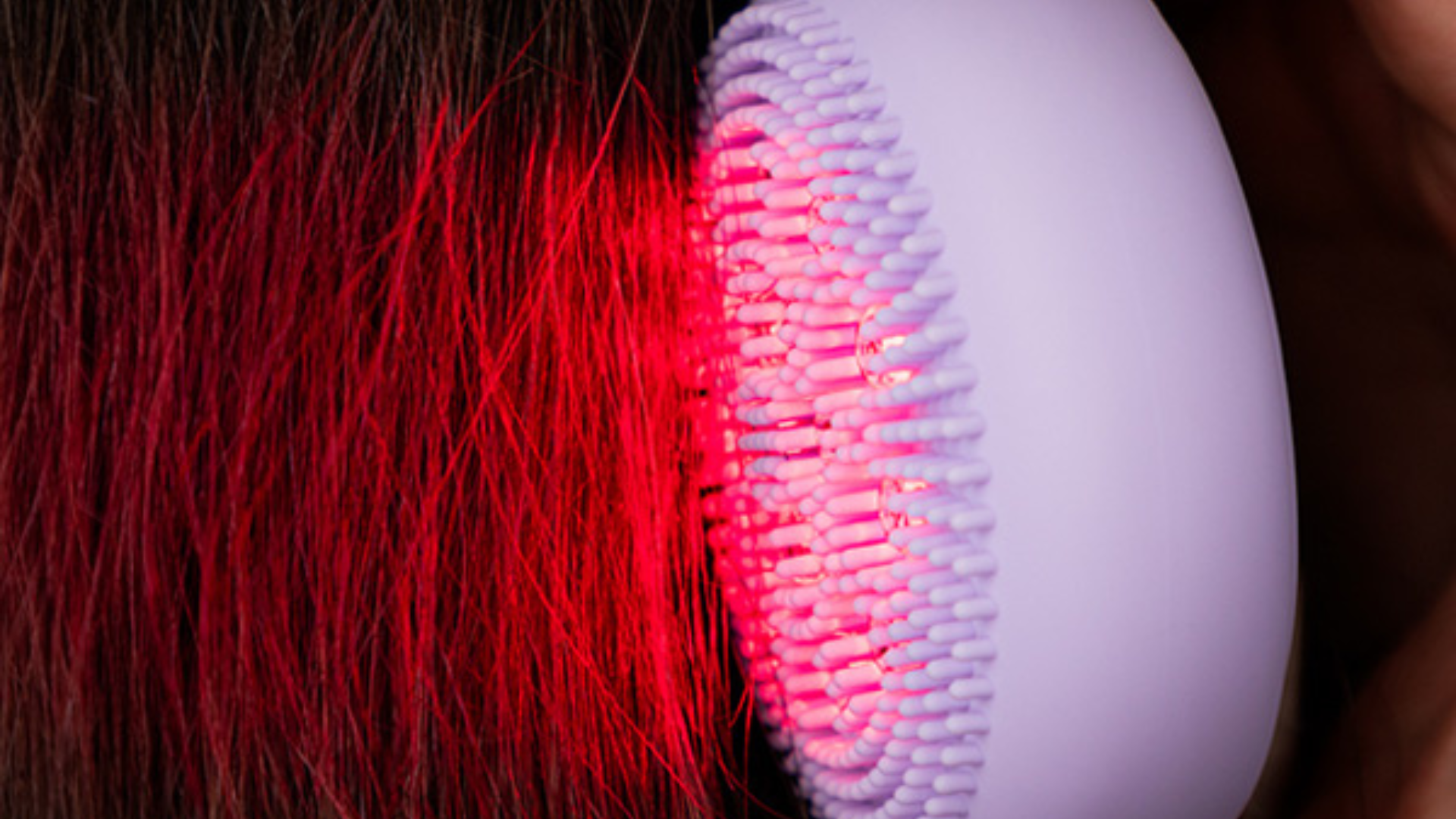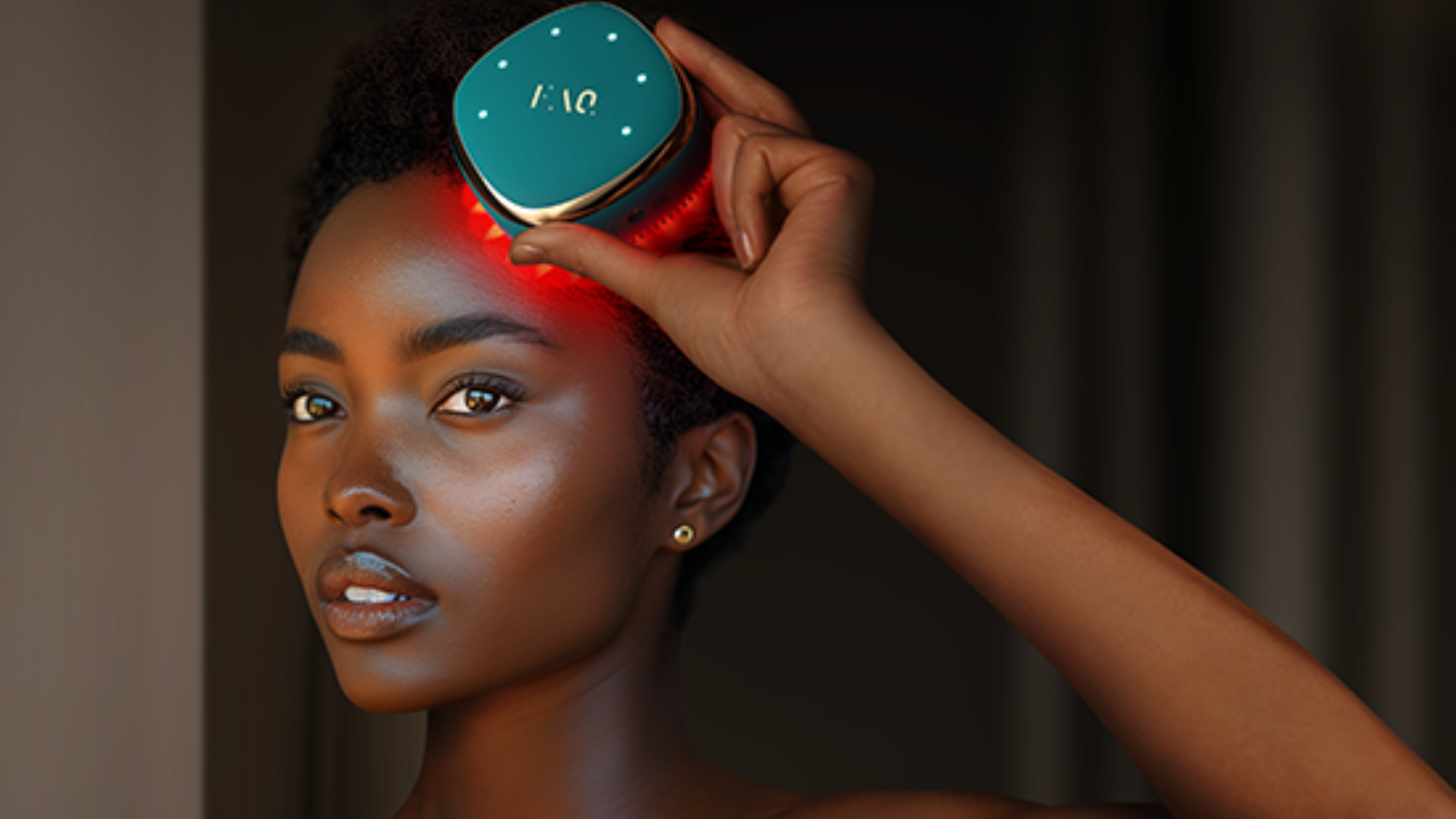Red light real results? What clinical trials really tell us
When it comes to red light therapy for hair growth, the phrase “clinically proven” is often used to reassure. And while it’s not wrong, it’s also not the whole picture.
LED therapy isn’t just trending—it’s been tested. In this article, we break down the most important studies that show how red light can improve hair thickness, density, and growth over time. You’ll learn how many people saw real results, how long it took, and what makes some devices more effective than others. We’ll also explore what types of hair loss respond best, and where the current research still has room to grow.
Clinical trials are a cornerstone of evidence-based practice, but they are not without bias, blind spots, or complexity—particularly in the world of hair loss. By design, clinical trials aim to isolate variables and test interventions in tightly controlled conditions. This structure gives them scientific legitimacy. Many of the red and near-infrared light therapy studies published over the past decade do indeed demonstrate encouraging results.

Subjects using LED helmets or combs have shown statistically significant increases in hair count, density, and strand thickness—especially in cases of androgenic alopecia. These outcomes, replicated across multiple trials, were often observed within 12 to 24 weeks of consistent use. Several of these studies also used objective tools such as digital phototrichograms and dermoscopy to measure changes over time.

Pros and Cons of Clinical Trials in Red Light Therapy
Pros:
- Controlled Environments: Randomised controlled trials minimize biases, providing reliable data on treatment effects.
- Objective Measurements: Use of standardised tools (e.g., phototrichograms) allows for quantifiable assessment of hair growth parameters.
- Regulatory Approval: Positive trial outcomes can lead to endorsements from health authorities, as seen with FDA-cleared devices for androgenic alopecia.
Cons:
- Subjective Assessments: Some studies rely on participant self-reporting, which can introduce bias and affect reliability .
- Short Duration: Many trials span only a few months, potentially missing long-term effects or delayed responses.
- Exclusion Criteria: Strict participant selection may limit how much we can apply the results to the general population. For instance, individuals with certain medical conditions, nutritient deficiencies or previous hair treatments are often excluded.
Summary of major clinical trials
Kim et al., 2013
Title: Effect of low-level light therapy on hair growth in patients with androgenetic alopecia: A randomised, double-blind, sham device–controlled multicentre trial
Summary: 128 men and women with pattern hair loss used a red light device (655 nm) for 24 weeks. Results showed a significant increase in hair density compared to placebo.
Let’s critically assess the validity of the Kim et al., 2013 study with a specific breakdown of its potential limitations and sources of bias, despite its strengths (randomised, double-blind, sham-controlled design):
-
Sample Size and Power
– Adequate sample size (128) is robust.
– Results may not generalize across different severities or causes of hair loss.
-
Trial Duration and Hair Cycle Timing
– 24 weeks aligns with early anagen-phase effects.
– However, it does not provide insight into long-term sustainability or post-treatment shedding.
-
Device Uniformity vs Real-World Variability
– The study used a controlled 655 nm LED helmet.
– Consumer devices vary in power, fit, and scalp contact—limiting real-world applicability.
-
Hair Density Increase – But Unclear Clinical Meaning
– While density increased statistically, the study does not detail:
• changes in hair shaft diameter
• vellus vs terminal hair ratios
• whether improvements were cosmetically meaningful to participants
-
Compliance and Protocol Adherence
– No specific detail on how use was tracked or enforced.
– Adherence could vary, especially with home-use devices, affecting consistency.
-
Participant Characteristics Not Fully Disclosed
– Inclusion of both men and women is a strength, but lacks data on:
• hormonal profiles or endocrine conditions
• concurrent treatments (e.g. minoxidil, oral contraceptives)
• ethnic diversity or scalp differences that may affect efficacy
-
Blinding and Measurement Methodology
– It is unclear whether outcome assessors were truly blinded.
– Method of hair density measurement (manual vs software) not fully specified, introducing potential bias.
-
Commercial Sponsorship
– Funded by the device manufacturer (Apira Science).
– While common in device trials, it increases the risk of selective outcome reporting or favourable interpretation.
-
Adverse Event Transparency
– Reported no adverse effects.
– However, the study doesn’t clarify what was monitored (e.g. erythema, irritation), or whether participants with sensitive scalps were included or excluded.
Lanzafame et al., 2014
Title: The growth of human scalp hair mediated by visible red light laser and LED sources in males
Summary: Compared red laser and LED light in 44 men over 16 weeks. Both groups showed statistically significant increases in hair counts.
-
Small Sample Size
– With only 44 participants split across two intervention groups, the study may lack sufficient power to generalise findings or detect smaller, but clinically relevant, differences between treatment types.
-
Short Duration
– The trial ran for just 16 weeks, which may not capture the full cycle of hair growth or long-term sustainability of results. Hair growth effects can take longer to fully manifest and stabilise.
-
Lack of Sham Control
– If there was no true placebo (sham light) group included, the trial may be susceptible to placebo effects. Without a control, it’s difficult to separate real physiological changes from participant expectations or natural fluctuation in hair density.
-
Blinding Unclear or Weak
– If the study did not ensure double-blinding (participants and assessors unaware of treatment type), assessment bias could have influenced hair count evaluations, especially in a subjective outcome like hair density.
-
LED vs. Laser Not Fully Isolated
– While it compared red laser to red LED, the physiological differences between coherent (laser) and non-coherent (LED) light may not have been fully explored. If wavelengths or energy outputs weren’t matched, it may limit clarity on which modality is more effective.
-
Demographic Limitations
– Only male participants were included, and likely within a narrow age range, meaning findings may not extend to women or individuals with other types of alopecia.
-
Commercial Bias
– If the devices used were manufactured by a company affiliated with the researchers or sponsors, there may be a conflict of interest that could bias outcome reporting or data interpretation.
Jimenez et al., 2014
Title: Efficacy and safety of a low-level laser device in the treatment of male and female pattern hair loss: A multicenter, randomised, sham device-controlled, double-blind study
Summary: Participants using a laser cap showed significantly increased terminal hair density vs. placebo after 26 weeks.
-
Device Use Compliance
– As a home-use device, user adherence could vary, and self-reported compliance may not be entirely reliable. Variations in use could affect outcome consistency across participants.
-
Hair Count Methodology
– Terminal hair density was the primary endpoint, but the method of measurement (e.g. manual counts, phototrichogram) is not always standardised or blinded, which could introduce observer bias—even in a double-blind study.
-
Sham Control Design
– If the sham device emitted any light or warmth (even if inactive), participants may have guessed their group assignment, potentially unblinding the trial. If it emitted no light at all, it might not be a convincing placebo.
-
Commercial Sponsorship
– The device used (laser cap) was likely associated with the study sponsor. Industry-funded studies, while not inherently invalid, should be scrutinised for selective reporting or overly favorable interpretations.
-
Duration
– 26 weeks is better than shorter trials. Sustainability post-treatment remains unknown.
-
Population Homogeneity
– If the demographic profile skewed toward a particular age, sex, or ethnicity, the results might not generalise across the broader population with pattern hair loss.
-
Lack of Biochemical or Histological Markers
– The study measured clinical endpoints (hair count), but did not assess underlying biological mechanisms like follicular activity, inflammation markers, or angiogenesis, which would provide mechanistic insight.

Many trials include subjective endpoints—how participants feel about their hair, or whether investigators note a “visual improvement”—which can introduce bias. Moreover, study populations are often narrowly defined. People with recent transplants, scalp inflammation, autoimmune conditions, or those on concurrent therapies are frequently excluded. This helps researchers limit confounding variables, but it also creates results that don’t always apply to real-world patients, who rarely present with one neat diagnosis.
The criteria for what counts as “improvement” can also vary. Some studies define success as a 10% increase in hair count—a result that may be statistically valid but not perceptible to the average person. Others run for short periods, capturing early changes but not the long-term picture.
In clinical terms, this creates a gap between efficacy (can it work?) and effectiveness (does it work consistently for most people in everyday settings?).
Despite these flaws, red light therapy has consistently shown the most promise in cases of androgenetic alopecia, where the hair follicle miniaturises over time due to hormonal influences. The results are less predictable for other forms of hair loss, such as telogen effluvium or alopecia areata. For these, the underlying mechanisms differ, and the role of inflammation or immune dysregulation may not respond as robustly to light-based interventions. These individuals may require additional layers of support—such as mechanical massage to break down fibrotic scalp tissue, targeted injectables like PRP or exosomes to reignite follicular activity, or dietary and micronutrient strategies to correct systemic imbalances that impede growth. In such cases, red light becomes one tool within a broader, multi-modal treatment plan rather than a stand-alone solution.
That said, it’s important to emphasize the strengths of the evidence base. The consistency of findings across multiple independent studies, the low incidence of side effects, and the non-invasive nature of red light therapy make it a highly attractive option—especially for those seeking alternatives to medications like minoxidil or finasteride. Moreover, the technology continues to improve, with new devices offering better wavelength targeting, scalp coverage, and built-in massage functions that further support blood flow and tissue health.
The takeaway? Clinical trials do tell us something important: red light therapy can work—and in many cases, it does. But they don’t tell us everything. Like all tools in trichology, it’s not just about the light itself, but how it’s used, who it’s used on, and what it’s paired with. Knowing how to read the science—not just the headlines—is key to getting results that shine in real life, not just in the data.




